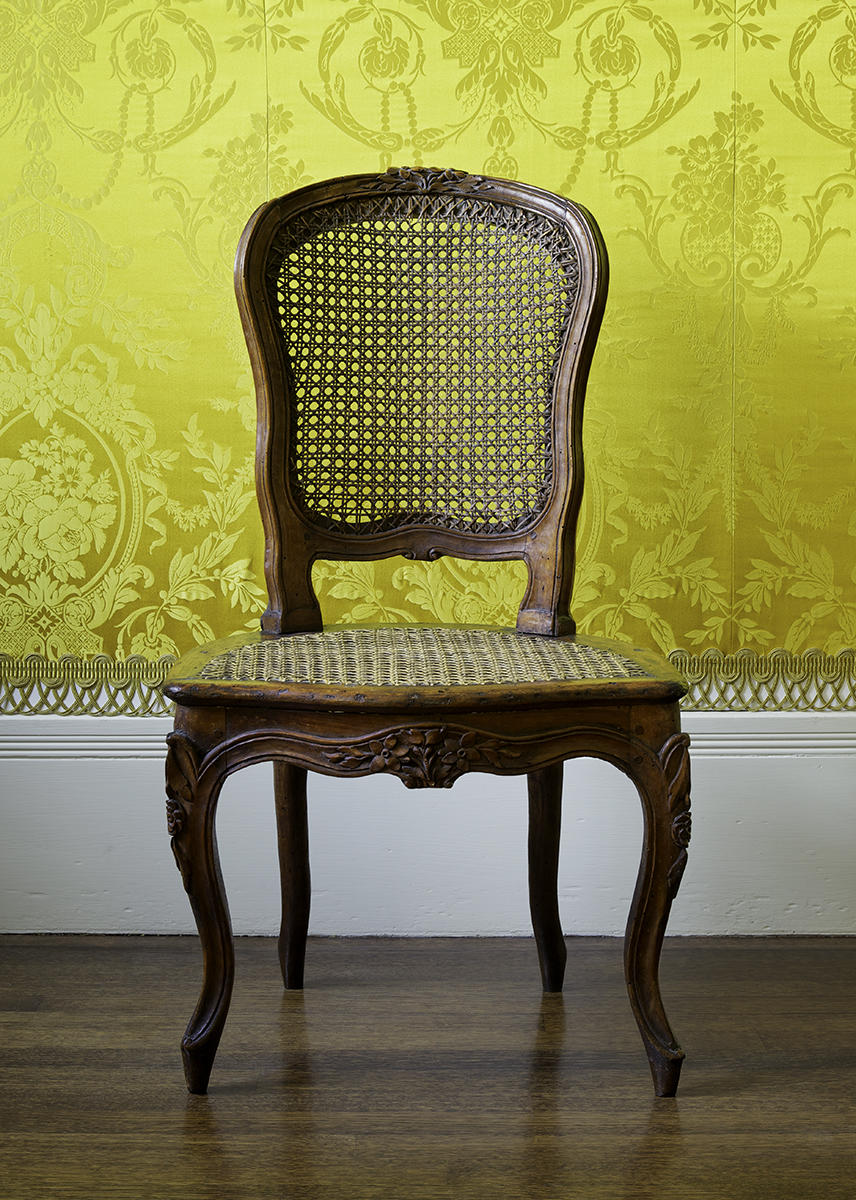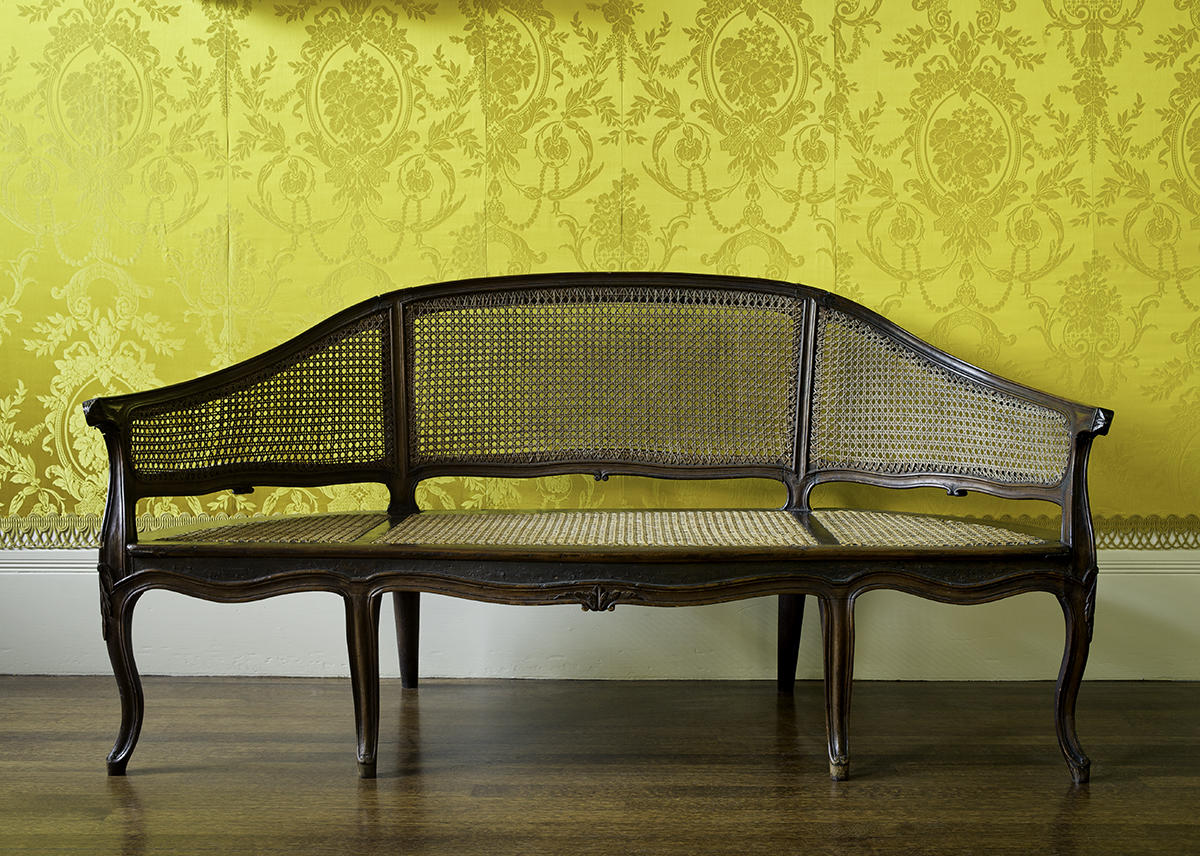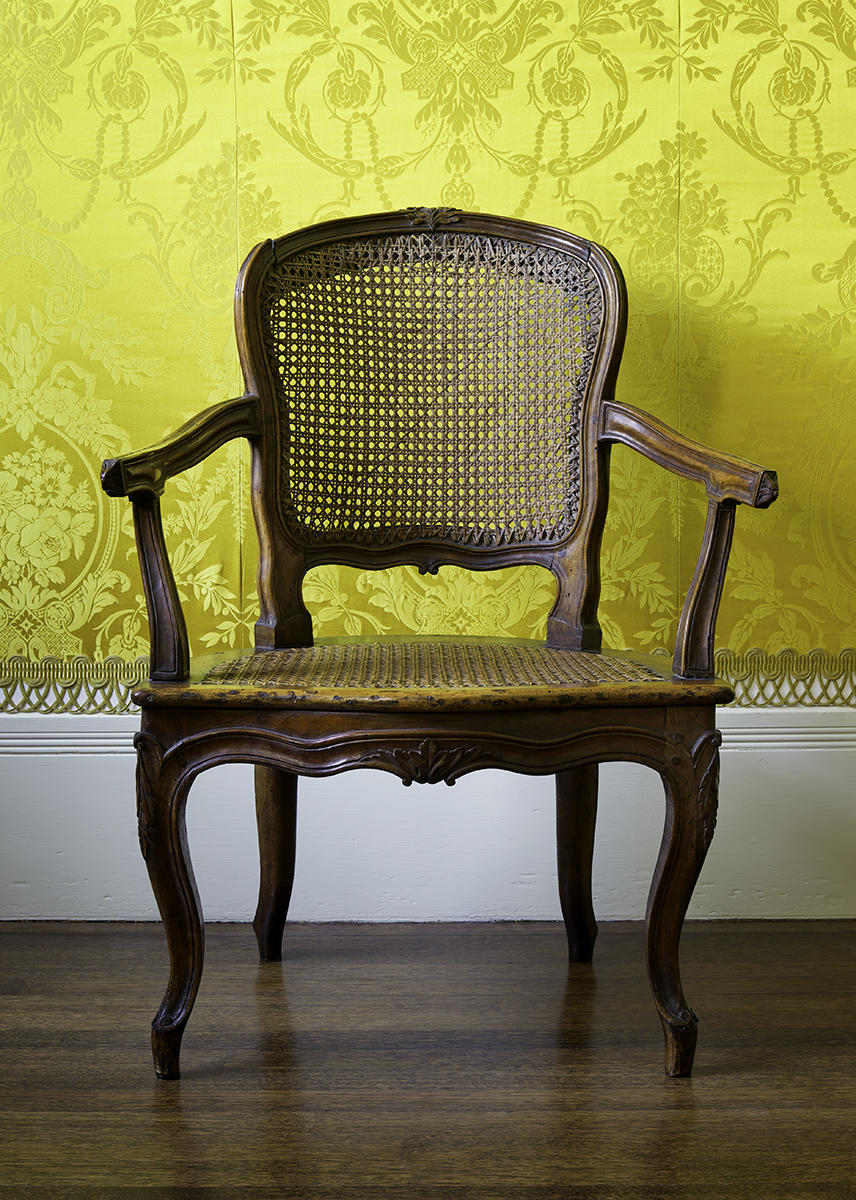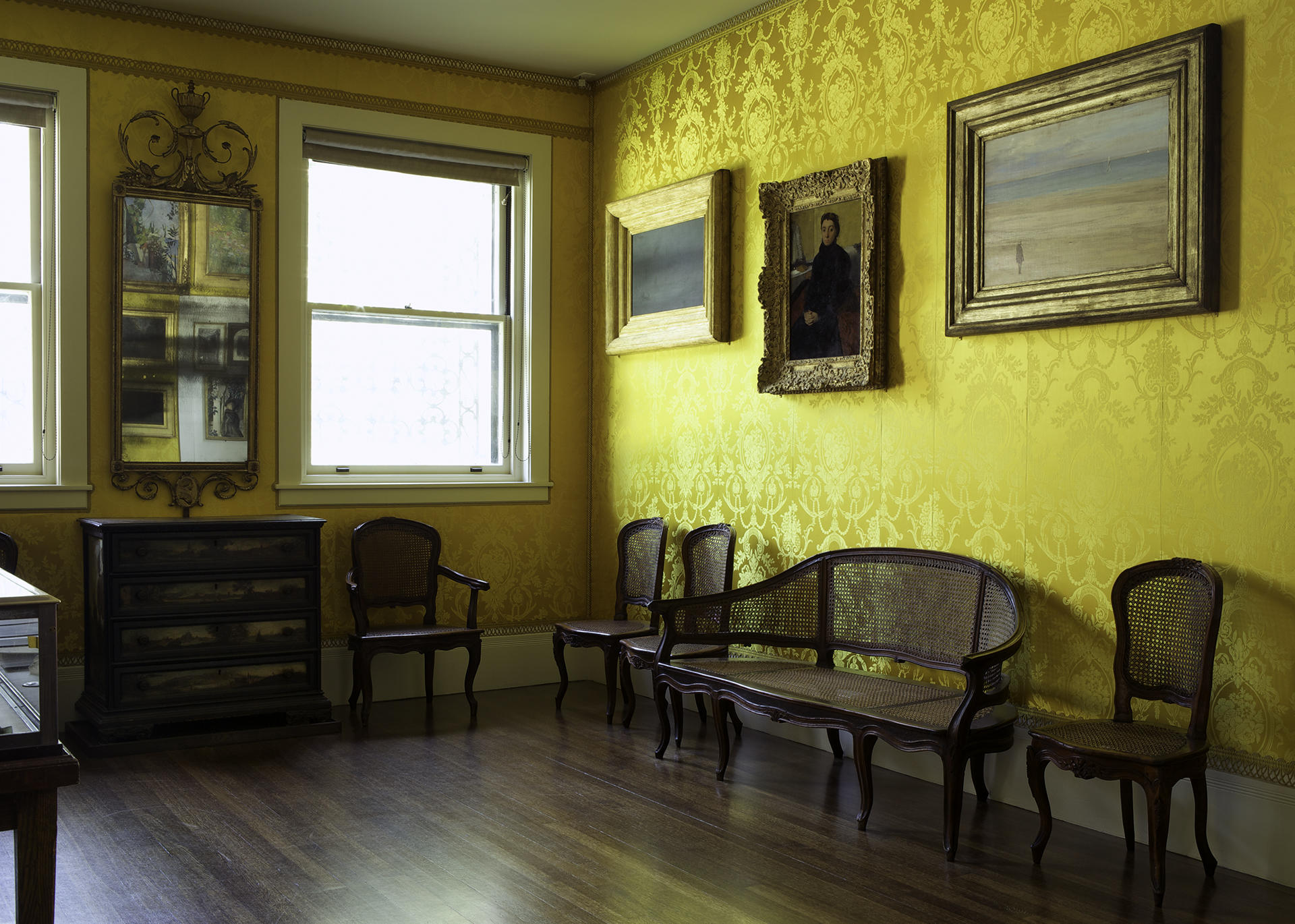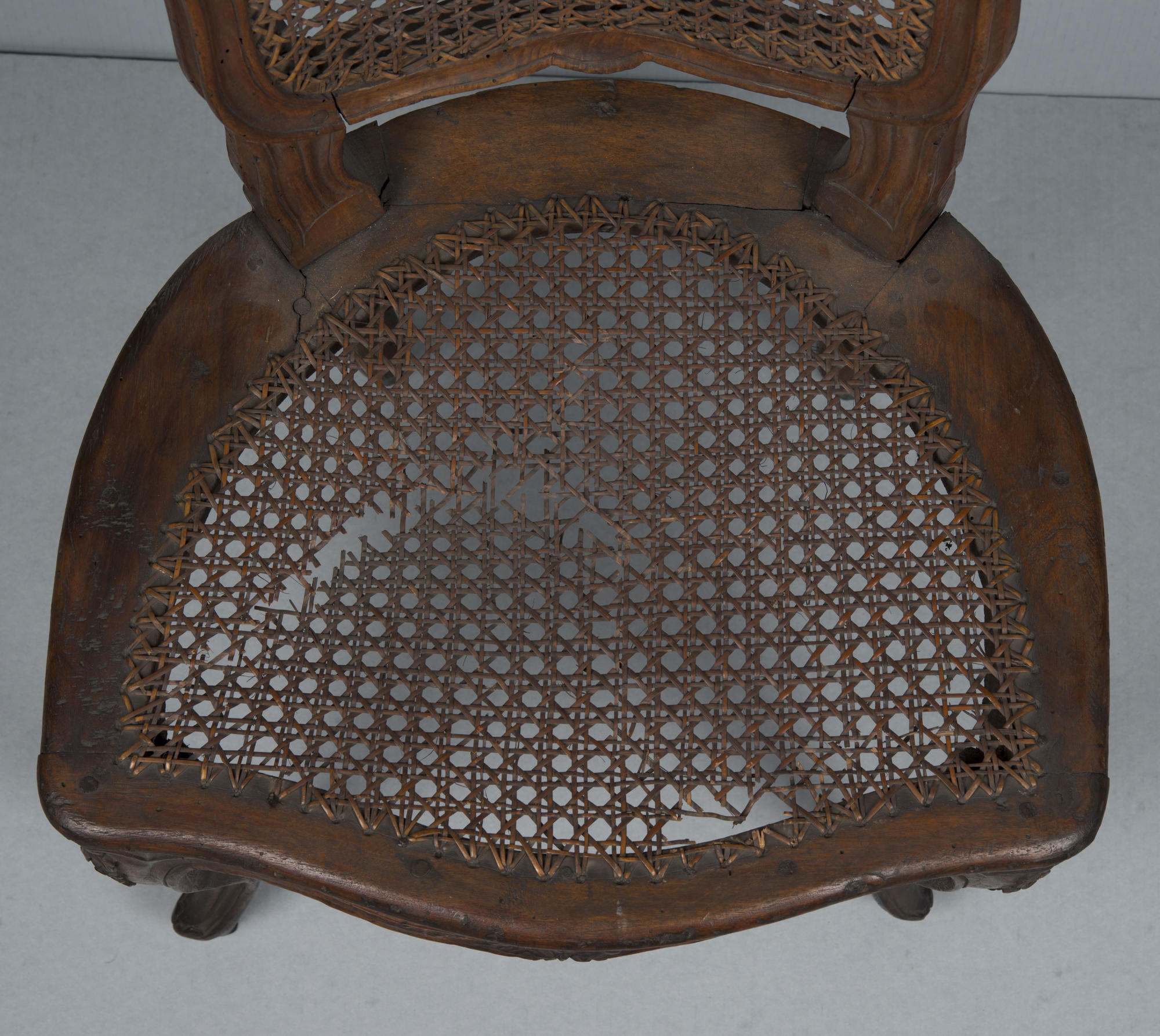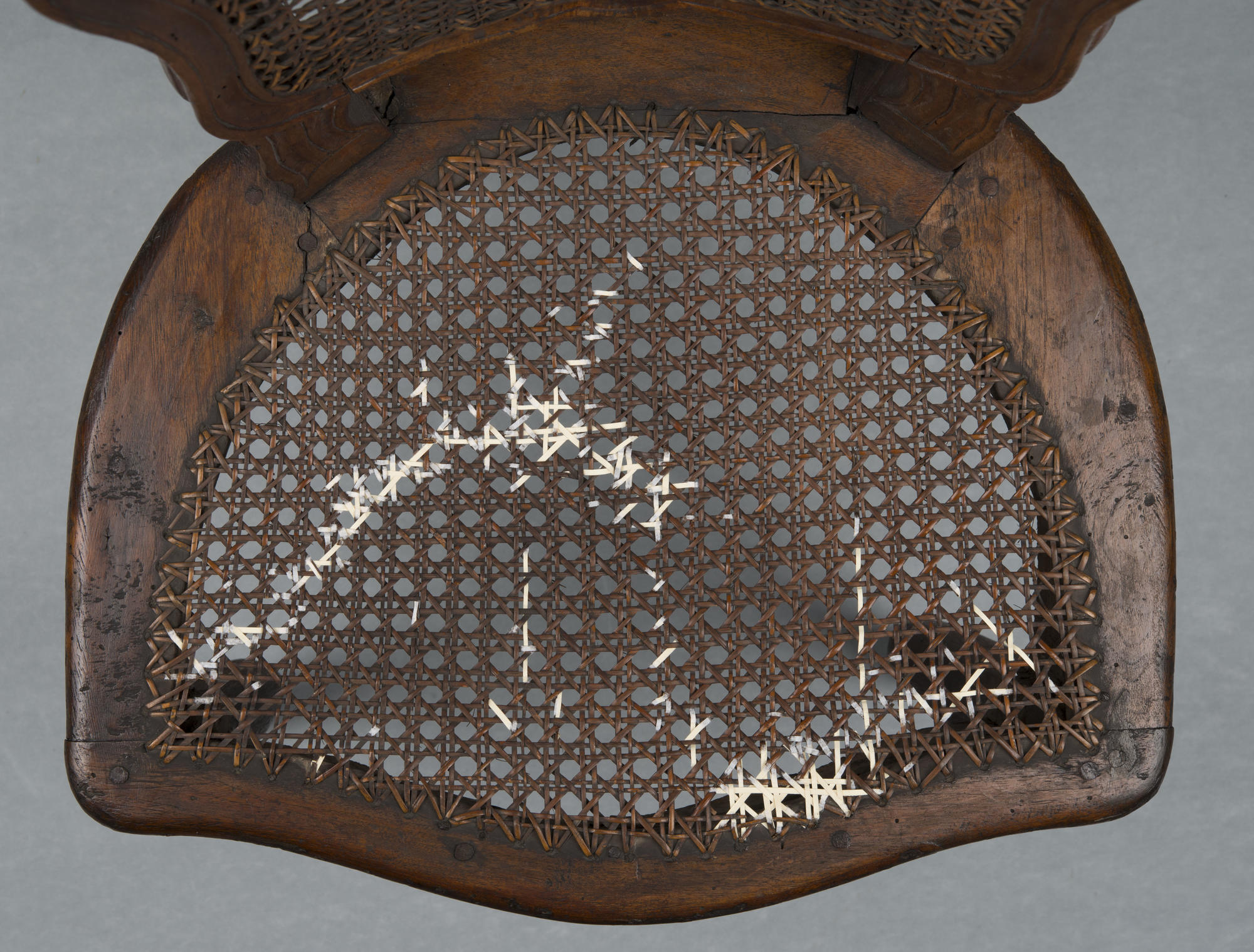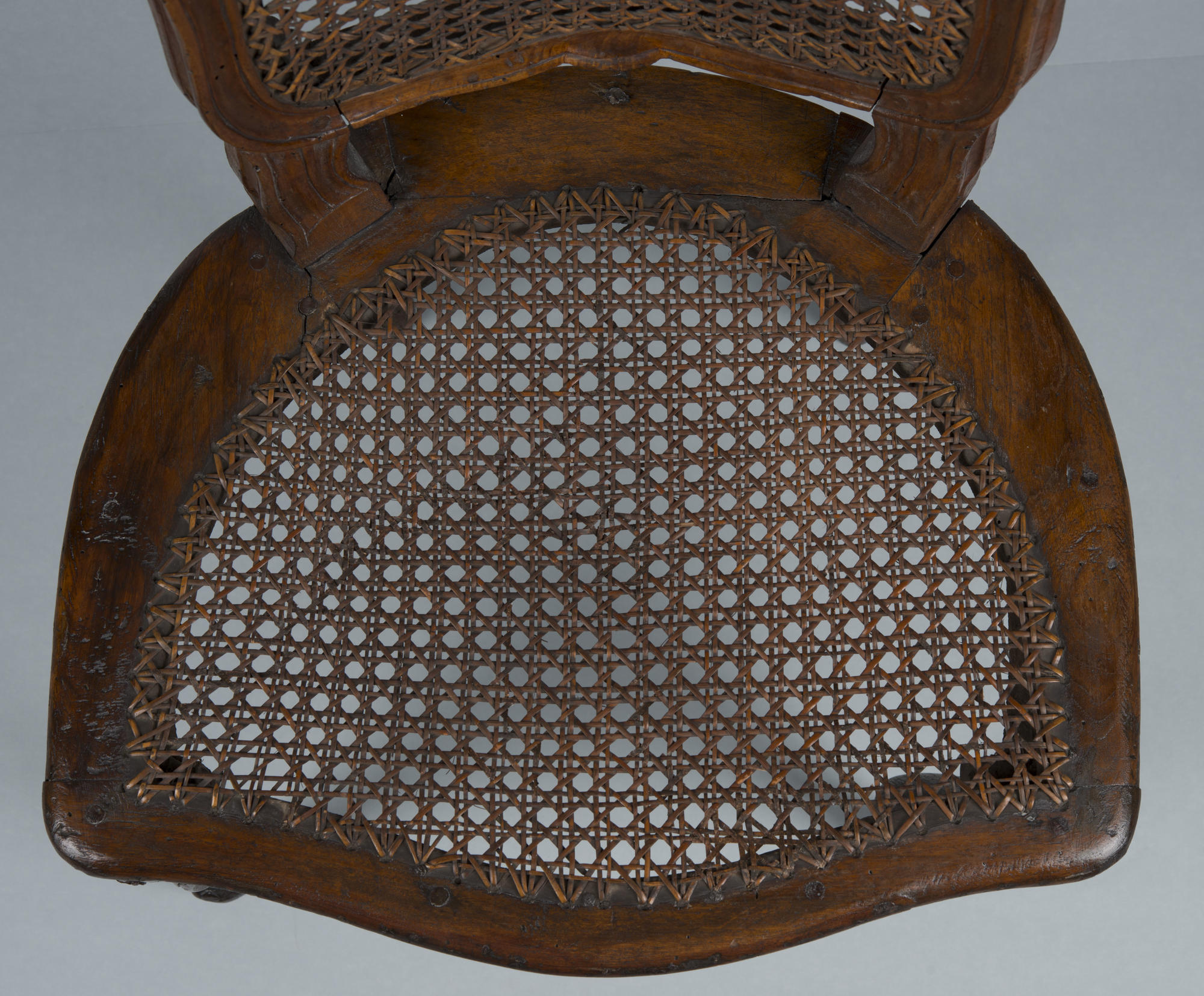Introduced in Europe in the 17th century, caning was a popular method for chair seating. Rattan—a plant native to Southeast Asia—was harvested, cut, and woven to create strong seats and chair backs. The primary method found in the Gardner Museum collection is 6-way cane. In this structure, a diamond and octagonal pattern is created by weaving together two vertical, two horizontal, and a single strand in both diagonal directions!
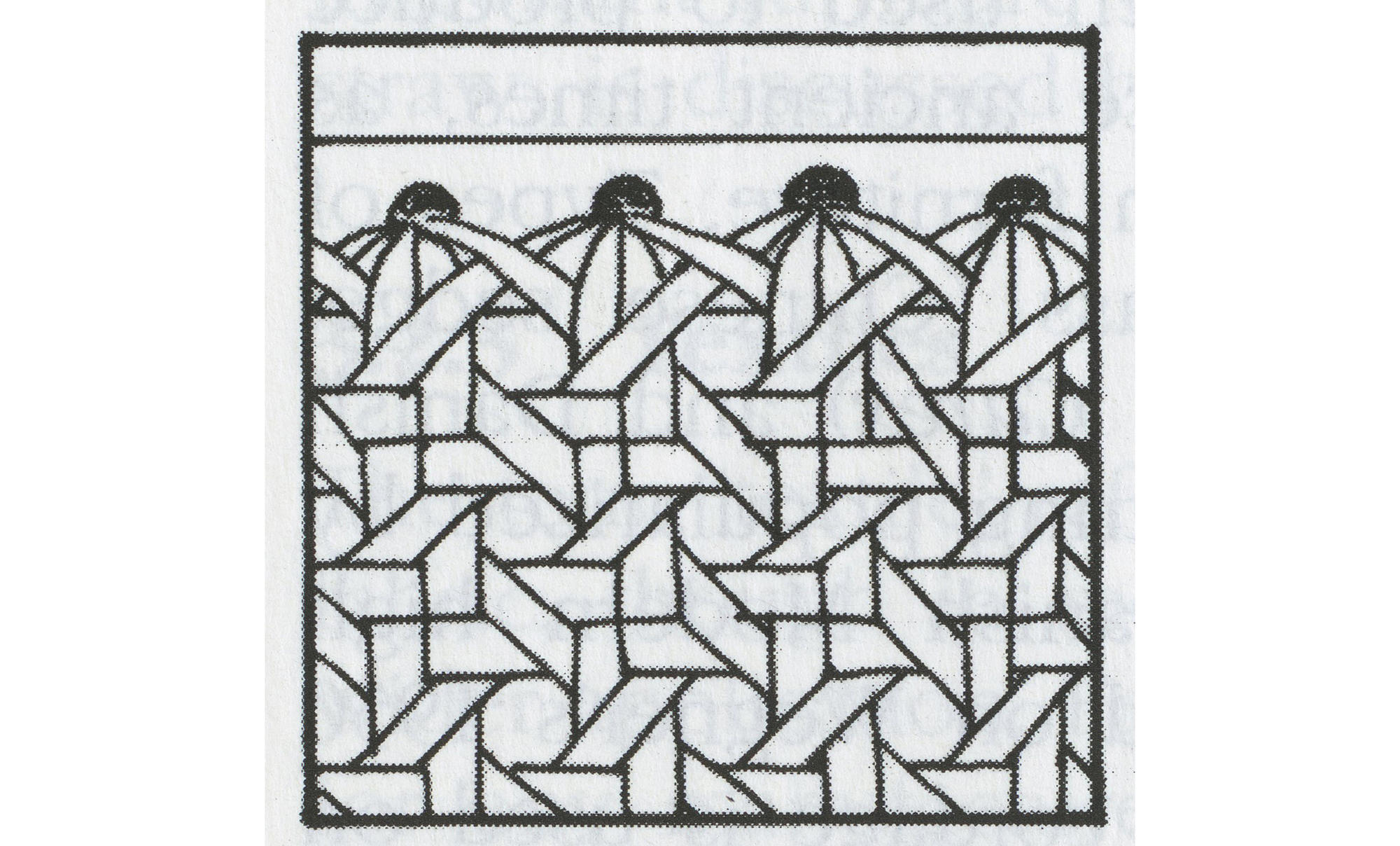
Two very different styles of caned chairs are featured in the Gardner’s collection. The more common style is to cane the entire seat and back, while a more elegant/advanced approach is to split the caning on the chair back with decorative splats. The Yellow Room set displays seats and backs adorned with canework brought to a glossy shine with varnish.
Another set found in the Blue Room reveals blue caning, a slightly unusual feature.
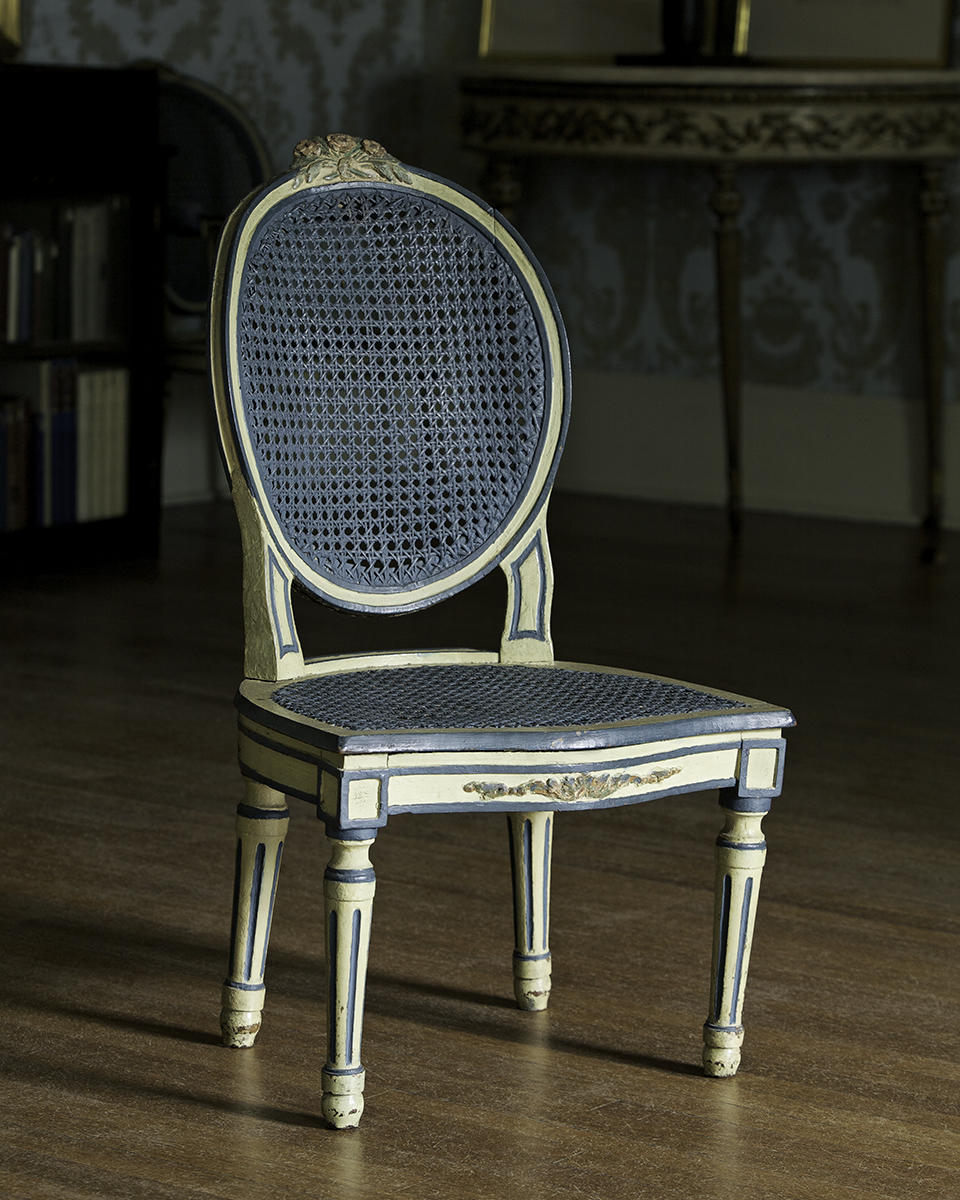
Photo by Sean Dungan
Italian, Piedmont, Side Chair, late 18th century in the Blue Room
Finally, a celebrated set in the Titian Room introduces a variation, a painted center splat that divides the caned back into two areas.
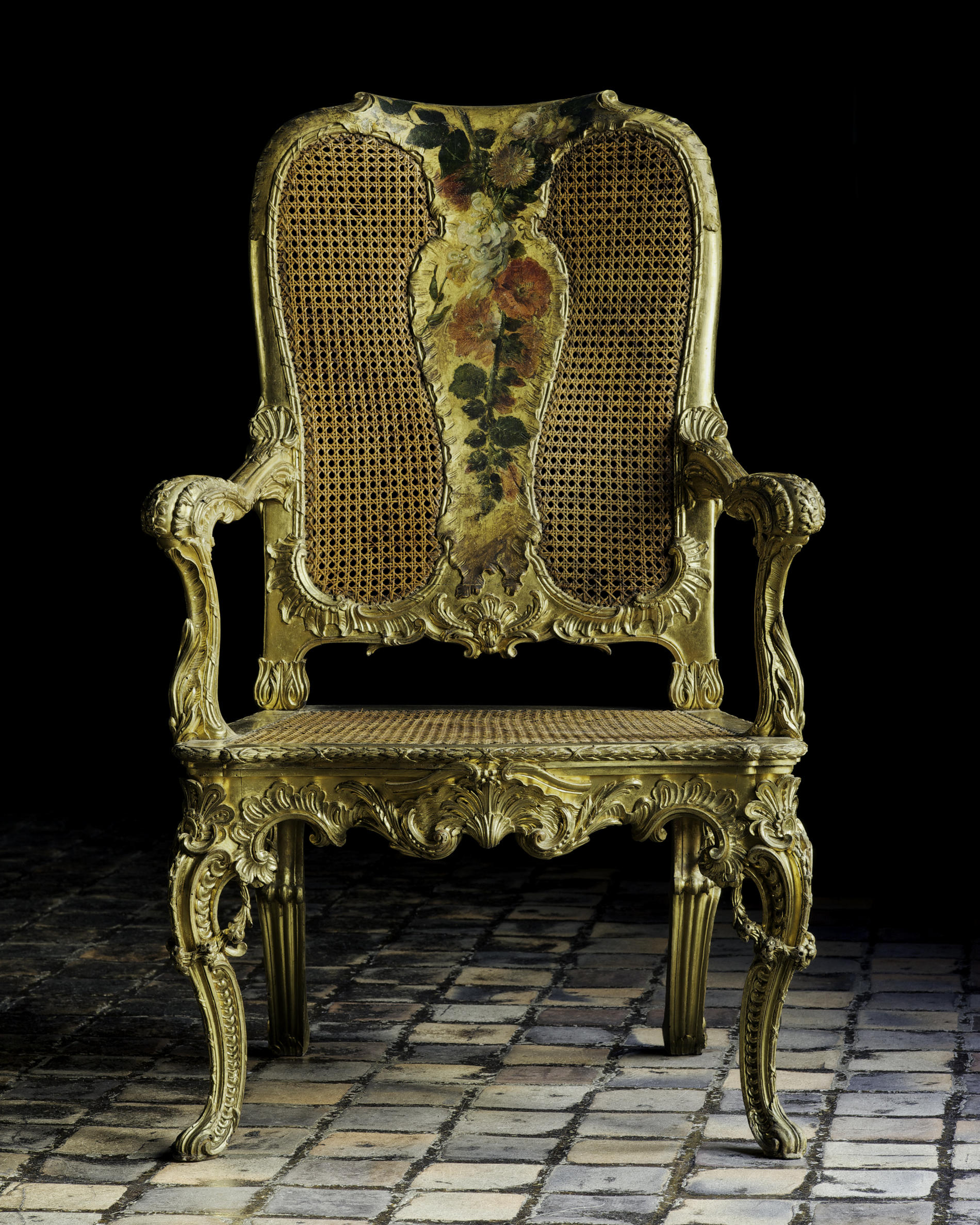
Photo by Sean Dungan
Attributed to Antonio Landucci (active 1770-1783, Rome), Armchair, about 1773
While originally made to be used and sat on, caning ages quickly, becoming infinitely more fragile. Changes in temperature and humidity cause it to become brittle and break. The canework on this chair from the Vatichino reveals substantial wear and tear.
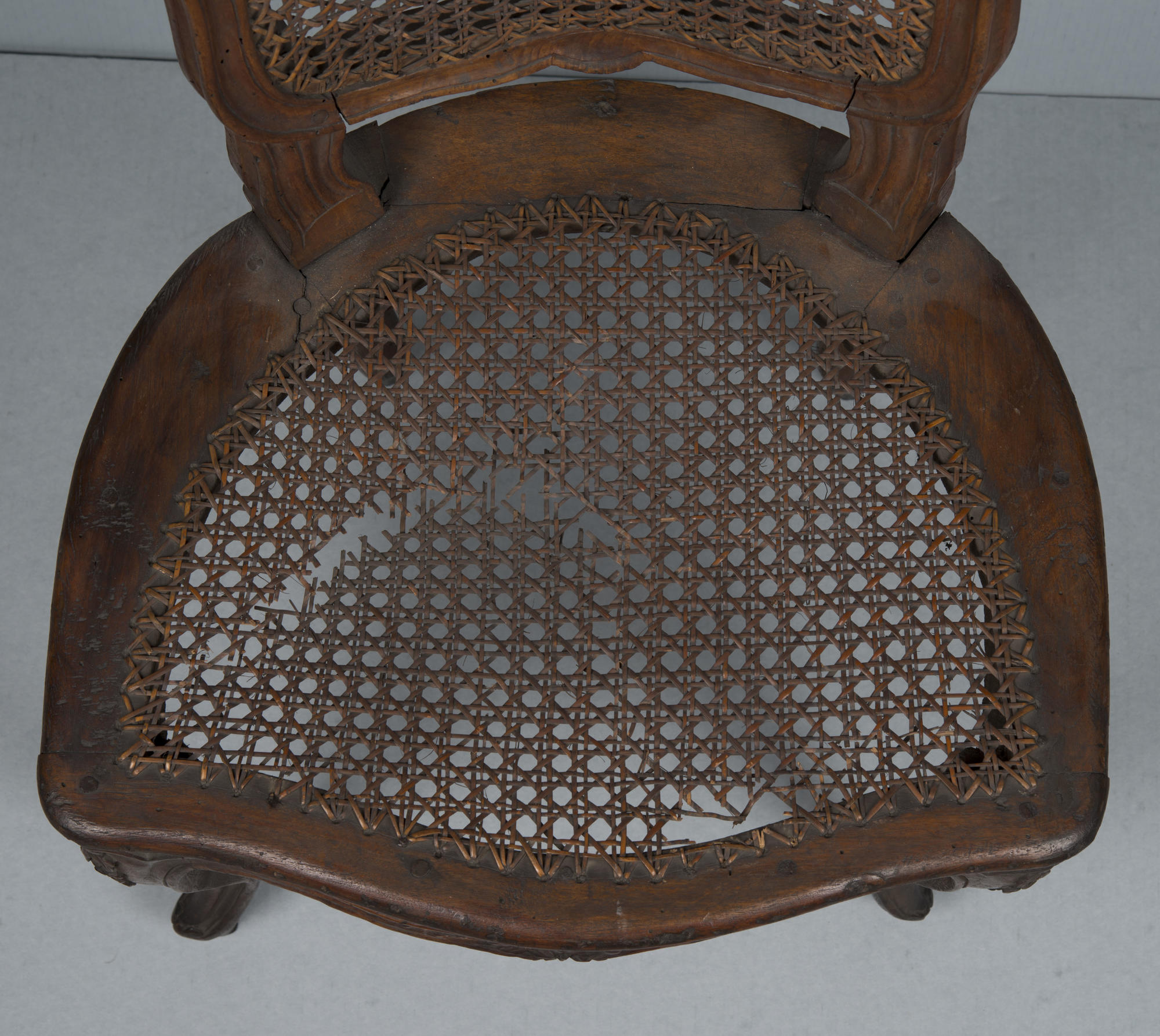
Italian, Parma, Side Chair, 2nd half of the 18th century, before treatment
As a part of the reinstallation of the Vatichino, conservators treated this chair in the lab, fixing breaks and repairing missing caning.
Our first step was to dust and vacuum the entire surface to remove the heavy accumulation of dirt and dust. Next, we humidified the caning using Gore-tex, the same waterproof, breathable fabric commonly found in modern day outerwear, which imparts flexibility and reduces warping by lining up the caning. Once we relaxed the seat, we meticulously realigned the caning, and bridged the remaining gaps using adhesives and Japanese tissue paper, which acted like a band-aid to hold the broken pieces of caning together. We also used archival file folders to recreate small, missing pieces, cutting them to the appropriate width and length to mimic the caning. Once the replacements were painted, the seat looked as good as new!
You Might Also Like

Explore the Collection
Attributed to Antonio Landucci (active 1770-1783, Rome) Set of Seven Armchairs (Poltrone), about 1773

Explore the Collection
Italian, Piedmont Settee, late 18th century

Conservation
Learn more about the Gardner Museum's Conservation Department
